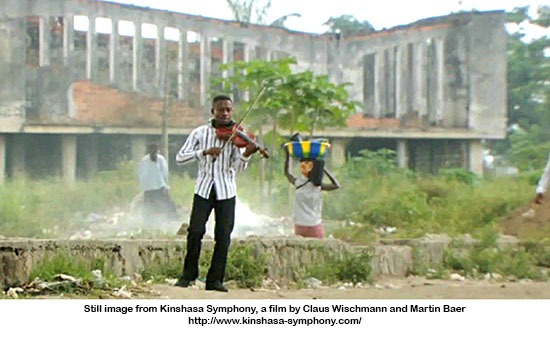By Michael Edson
Note: This post was published as the epilogue to Collaboration, Innovation, and Models: Proceedings of the CLIR Cataloging Hidden Special Collections and Archives Symposium, released earlier this week.
Years ago, when I was working in my studio as a young, starving artist, I heard a radio interview with the renowned violinist and conductor Itzhak Perlman. At one point, Perlman was asked if he thought the highest levels of creative genius were the result of innate genetic gifts or if genius could be acquired by ordinary people through instruction and study—if genius could be taught.

Perlman’s reply was warm and thoughtful, appreciative of both the magic of raw potential and the power of practice and discipline, but I remember feeling that there was something missing from the conversation. It seemed to me, as I stood there at my easel with a brush in my hand and the oblivion of an empty canvas before me, that the most important question wasn’t if genius could be taught; it was whether we should lead ourlives as if we were certain it was true.
Genius comes from unexpected places. When we first started putting collections online 10, 20, and even 30 years ago we made grand statements like “everyone in the world will be able to use these resources.” We believed in the potential of “everyone” but based on what we built and shared I think that what we really had in mind was just more of the same kind of researchers, academics, and students we had always served. More of the same isn’t bad—you can do a lot of good with more—but it’s not everyone. Everyone—a global, connected everyone, full of potential—is something new, and it’s a game changer, but most of the time that everyone seems more theoretical than real. It’s hard to see.
I posted a job offer recently to Freelancer.com, an online marketplace of 16 million freelance workers from around the world. “Tell me what it would mean to you,” I wrote, “if the resources of European and North American libraries, museums, and archives were made available to you, for free.” I offered $25 to anyone who would send me a few paragraphs of writing or a minute or two of online video.
Almost instantly I was approached by remarkable people from all over the world: a teacher in Mexico, a young mother and weightlifting coach in the Ukraine, a medical student and his friends in Pakistan, a young businesswoman in Indonesia, and university students in Nigeria and Ghana. All of these individuals were experienced writers and researchers; all of them were entrepreneurs, using the web to find and serve clients almost everywhere the Internet can reach; and all of them seemed to respond, immediately and viscerally, to the hidden meaning of my question: can what we do here in the Hidden Collections program—among the libraries, archives, and museums of North America—be important to a wide and disparate audience? Can opening collections help people cultivate their own personal talents, regardless of who they areor where they live?
It turns out that if you’re a curious, motivated individual in the Swat Valley or Ado-Ekiti, access to knowledge and information means a lot to you: it can, in fact, be central to your values, your education, your livelihood, and the way you explore and understand the world. “Knowledge is a weapon to change the way of people’s thinking,” Kusmarni told me from Jakarta, in a sentiment that was echoed by everyone who answered my ad. But information, they all reminded me, is only valuable if you can get it, and use it, where you live.
Joseph, from the Ekiti State University in Nigeria and Owusu, from Donkorkrom, Ghana, told me of the insurmountable difficulties they and their classmates face when attempting to use Western collections: paywalls, geoblocking, and membership requirements routinely stand in their way. “You can imagine my frustration when I stumble across a site that has all the information I am seeking only to be informed that my geographic location does not have access to this,” wrote Joseph. Owusu’s stories echoed these frustrations, but he added hopefully, “To have an online digitized library that is free to be accessed is in my opinion the best thing that can ever happen to me and most of my mates at the University.”
It is an article of faith in our community of scholars, institutions, and collections that we work for a noble purpose: that building, preserving, and disseminating knowledge is one of the defining acts of a wise and enlightened society. But our success in these endeavors will be defined by the choices we make—what we choose to catalog and digitize, what we share with the world, and under what conditions we permit or restrict access to our wealth of resources. Remarkable people like Kusmarni, Owusu, and Joseph seem to be everywhere—all over the globe as well as in our local classrooms and communities. Will we in the Hidden Collections program act as if we believe in their genius? We can and we should.
Michael Peter Edson is a CLIR Distinguished Presidential Fellow, a member of the Open GLAM advisory board at the Open Knowledge Foundation, and a digital strategist at the Smithsonian Institution. He is organizer of the Openlab Unconference and Workshop, to be held December 1-2, 2015. Follow him at @mpedson. For more about open collections, see Michael’s presentation “The Future is Open.” This blog is licensed CC-BY and the views expressed are Michael’s alone.

